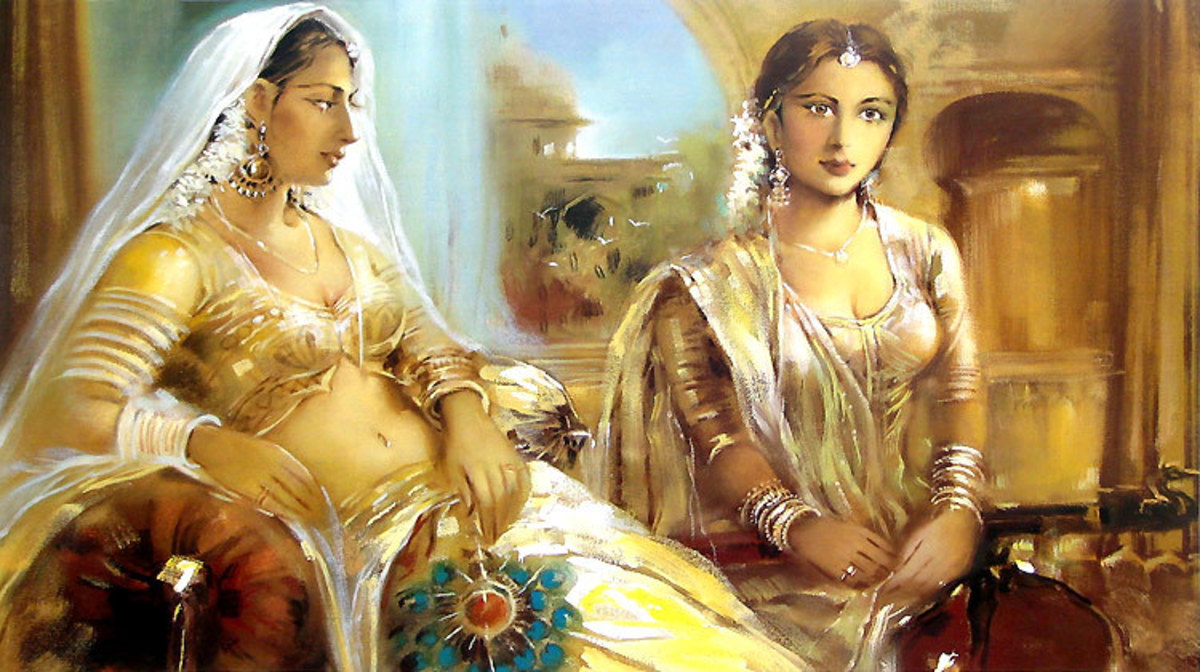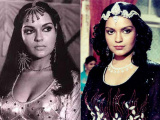
සංජය ලීලා බන්සාලි ඉන්දියාවේ සම්මාණනීය සිනමා අධ්යක්ෂවරයා පද්මාවතී සිනමාවට නැගීම ආරම්භ කර තිබුනා. මෙහි පද්මාවතී ලෙස රගපාන්න තෝරගෙන තිබුනෙ දීපිකා පදුකෝන්. මෙහි රූගතකිරීම් ඉන්දියාවේ ජායිපූර්වලයි සිදුවෙමින් තිබුනෙ. ජනවාරි 27වන සිකුරාදා පද්මාවතී රූගත කිරීම් අතර තුර එතැනට කඩාවැදුන විරෝධතා කරුවන් පිරිසක් සංජය ලීලා බන්සාලිට හිරිහැර කරලා පහරදී තිබෙනවා.
බොලිවුඩ් අධ්යක්ෂවරු සහ නළු නිලියන් මේ විරෝධතා කරුවන් සංජයට කරන ලද හිරිහැරය සම්බන්ධව කෝපාවිෂ්ට වෙලා වහාම මේ විරෝධතා කරුවන් ට එරෙහිව නීති මගින් කටයුතු කරන්න කියලා දැඩි ප්රකාශ නිකුත් කරලා තියෙනවා. මෙය පහරදීමක් ලෙසයි වාර්තා වෙන්නෙ. මේ සම්බන්ධව NDTV වාර්ථා කරලා තිබුනා.
සංජය වැනි ප්රවීණ සහ බොහෝ දෙනාගේ ගෞරවය සහ ආදරය දිනා සිටින ඔහුට කරන ලද මේ පහරදීම සම්බන්ධයෙන් කරන් ජොහාර් ප්රකාශයක් කරමින් පවසා සිටින්නේ 'සංජයට සිදුවූ පහරදීම සම්බන්ධයෙන් වහාම නීතිය ක්රියාත්මක විය යුතු බව සහ මෙවැනි පහරදීම් අභියස සියල්ලෝම සහෝදරත්වයෙන් එකාවන්ව පෙළගැසිය යුතු බවයි' .
එමෙන්ම අධක්ෂ මහේෂ් භාත් පවසන්නේ 'නිශ්ශබ්දතාව පාවාදීමක් වනු ඇති බවයි'. ෆාරා අක්තාර් පවසන්නේ 'බන්සාලි ට සහ චිත්රපට කණ්ඩායමට විරුද්ධව කටයුතු කළ පිරිසෙන් කීදෙනකේ අත්අඩංගුවට ගනීද සහ මෙය ප්රජාතන්ත්රවාදය විහිළුවට සමච්චලයට ලක්කිරීමක් බවත් සංජය වෙනුවෙන් ඔහු පෙනී සිටන බවත්' ප්රකාශ කොට තිබෙනවා.

මෙලෙස ජායිපූර් දර්ශණ පසුතලයට කඩා වැදී උපකරණ වලට පහරදී විනාශ කොට සංජයට කම්මුල් පහරක්දී ඔහුගේ කොණ්ඩයෙන් ඇද ඔහුට හිරිහැර කර ඇති පිරිස වනුයේ රාජ්පූර්ට් කාර්නි නැමති සංවිධානයේ සාමාජිකයින්ය.
පද්මාවතී ඉන්දියානු ඉතිහාසයේ රැජිනකි. සංජය මෙහි වැරදි ලෙස පද්මාවතී බිසව සහ අලහවුදීන් කිහිල්ජි යන අධිරාජ්යයා සමග පේ්රම සම්බන්ධයක් ප්රථිනිර්මාණය කිරීම සම්බන්ධයෙන් දැඩි ලෙස විරුද්ධත්වය ප්රකාශය කරයි. එය ඉතිහාසයේ සත්ය සිදුවීම් විකෘති කිරීමකැයි විරෝධතා කරුවන්ගේ සංවිධානයේ නායක නාරායන් සිංග් පවසයි.

මේ වනවිට ජායිපූර්හි රූගත කිරීම් අවලංගු කර ඇති අතර මේ සම්බන්ධව පොලීසයි මේ වනවිට පරීක්ෂණ ආරම්භ කොට ඇති බව වාර්ථා වේ.


Padmini or Padmavati spent her life under the care of her father Gandharvsena and mother Champavati.[4] Padmini had a talking parrot named "Hiramani".[5] Her father arranged a swayamvara to wed his beautiful daughter to an able man and invited all the Hindu kings and Rajputs (request to marry her by showing their eligibility). King Rawal Ratan Singh of Chittor hearing of Padmini's attributes went to the swayamvara regardless of having multiple wives. There he won her hand by defeating another eligible king, Malkhan Singh.[6] He returned to Chittor with his beautiful queen Padmini.
In the 12th and 13th centuries, the Sultanate of Delhi, set up by Muslim Turkic nomadic invaders, was growing in power.[8]The Sultans made repeated attacks on Mewar.[9] It is famously said and believed that Alauddin Khilji attacked Chittorgarh to have Maharani Padmini all for himself. This story is based on the poem Padmavat by Malik Muhammmad Jayasi, written in Awadhi in 1540. However, some historians do not agree with this story and claim it to be a legend or a famous folklore.
Story of Padmini and Chittorgarh[edit]
In 1302-03 CE, Chittor was under the rule of Rajput King Rawal Ratan Singh, a brave and noble warrior, and also a patron of arts. He had many skilled and talented artists in his court, one of whom was a musician named Raghav Chetan.[10] But what people did not know was that Raghav Chetan was also a practitioner of magic and spells. He used this hidden talent to defeat his rivals. Unfortunately, he was caught red-handed while practicing magic, which greatly displeased the king.[9] Raghav Chetan was thus banished from the kingdom after he was publicly humiliated when forced to sit on a donkey with black paint on his face and ride around the capital.[9] This harsh punishment earned Ratan Singh an uncompromising enemy. Sulking after his humiliation, Raghav Chetan went to Delhi with the aim of trying to incite the Sultan of Delhi, Alauddin Khilji, with a reason to attack Chittor.[9]
The Sultan on reaching Mewar was anxious to see the beautiful queen Padmini of whose beauty he had heard a lot. As a guest to the kingdom, he asked to meet with the queen. Padmini however, suspicious of Alauddin's demand declined the request. King Ratan Singh then tried to talk his queen into agreeing for he knew of the strength and might of the Delhi Sultanate and the Khilji Dynasty. Padmini then put a condition that Alauddin should see only her reflection that too in the presence of her husband, herself accompanied by a hundred female servants.[11]
When the sultan of Delhi saw her, he was so smittened by her beauty that he wanted Padmini for himself. He thus decided to attack Chittorgarh. He believed that if he killed the king he could have his queen.[11]
The Rajputs fought valiantly in the battle, but lost. Alauddin Khilji, all triumphant when reached the fort was shocked. To his great dismay and disbelief all the royal women including Padmini had committed jauhar.[11]
The women who performed jauhar perished but their memory has been kept alive till date in the bards and songs which glorify their valor. To protect their self respect and honour, they jumped into the fire pyre. To these women death by jauhar was better than the security and luxury of inglorious captivity.[12][13][14]
Padmavat[edit]
Malik Muhammad Jayasi's poem records yet another account of the events.
The retelling of a Rajput epic of resistance by a Muslim such as Jayasi is notable enough, but his embellishments of the Rajput narrative intrigue us even further.[15] In Jayasi's retelling of the story, Padmini is renamed 'Padmavati', and she is the princess of Chittor. In this version Padmini is held captive by her oppressive father, surprisingly very similar to how Sita was held captive by the tyrant King Ravana. Jayasi thus draws many parallels from the plot of the Indian epic 'Ramayana'.[15] Like Hanuman, Ratnasena hears of Padmini, but falls in love with her. He then disguises as a yogi, giving up his kingdom and goes in search of Padmini. When her father finds out he tries to kill Ratnasena. Jayasi here presents him as a second Hallaj, the famous ninth-century Sufi martyred in Baghdad for his unorthodox theological views. Ratnasena’s impending martyrdom is miraculously averted when his true identity as the king of Chittor is finally revealed.[15] Ratnasena then marries Padmini and returns to Chittor. Things from then however, take a downhill when emperor Alauddin Khilji hears of her beauty. He launches a siege which would ultimately ruin both Chittor and Padmini. It is this martyrdom of Ratnasena as a second Hallaj that foreshadows his later “martyrdom” at the hands of Alauddin Khilji.
When Ratan Singh refuses Alauddin Khilji's demand for Padmavati for his harem, war ensues and the king is taken prisoner. Meanwhile, the king of neighbouring Kambhalner makes an indecent proposal to the queen. Ratan Singh escapes and kills the king of Kambhalner, but is himself fatally wounded. His two queens, Padmavati and Nagmati perform Jauhar, and Alauddin's army arrives when their ashes are still warm. Chittor falls to the emperor.[16]
Thus, in restating an old Rajput narrative Jayasi embellishes it by weaving into it several inter-textual strands- the Ramayana, a famous Sufi martyrology, and Natha Yogic cosmology.[15]
Since then, the Hindu and Muslim retelling of Jayasi's poem has been going on; with retelling of this story also in Persian. One such example is of Lachhmi Ram’s recollection of the famous couplet by Hafiz (1 326- 1389) suggests this line of reasoning: Chittor indeed lies in ruins, its inhabitants are indeed dead, but properly understood Chittor is the edifice of love, as proven by Padmavati’s resolve to commit sati for her dead beloved-and this edifice remains untouched. Thus, death and defeat are paradoxically the proofs of an ultimate victory.[15]
Death[edit]
It is believed Maharani Padmini performed Jauhar in 1303, the year Alauddin Khilji attacked Chittor.[17] Jauhar (also spelled jowhar) was the act of self-immolation performed by women, most notably by the queens and royal ladies of the Rajput dynasty, in Rajasthan, after the death of their husbands at the hands of the enemy. These self immolation practices were to save oneself from being taken as a mistress or slave by the victor, which was not acceptable to the Rajputana Queens, for it symbolized the giving up of their self respect and pride which was of utmost importance to the Rajputs.















